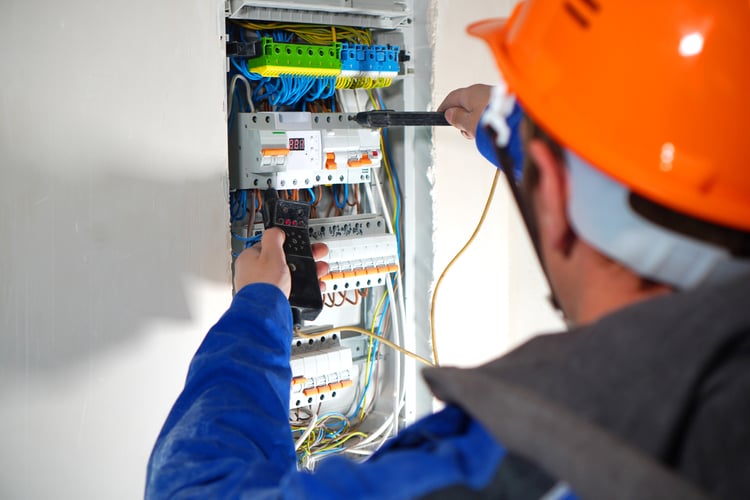Advanced BRE Automation Australia: Changing Your Automation Requirements
Demystifying Electrical Installation: Recognizing Codes and Regulations for a Lawful and Safe Setup
In the world of electric installation, adherence to codes and guidelines is vital to ensure both legitimacy and safety. The journey to debunking electrical installment goes beyond plain familiarity with guidelines; it necessitates an extensive grasp of exactly how to carry out safe electrical methods efficiently.
Value of Electric Codes
The adherence to electric codes is crucial in ensuring the security and dependability of electrical installments. Electrical codes work as a collection of standards and guidelines that dictate the appropriate layout, setup, and maintenance of electric systems. These codes are established to decrease the risk of electric risks, fires, and other security issues that may arise from defective electrical job.

Additionally, electric codes are on a regular basis upgraded to include new technologies, finest techniques, and safety and security procedures. Remaining updated with these codes is necessary for professionals in the electrical sector to ensure that their work fulfills the most recent security requirements. Eventually, the significance of electrical codes hinges on developing a secure and efficient electrical infrastructure that profits both individuals and communities.
Secret Laws for Safety
Several essential policies govern the security standards in electric setups. One vital guideline is the National Electric Code (NEC), which provides standards for secure electrical style, setup, and inspection to protect people and residential or commercial property from electrical hazards. The NEC covers elements such as wiring approaches, grounding, overcurrent defense, and devices setup to guarantee a secure electric system.
One more important guideline is the Occupational Safety And Security and Health Management (OSHA) criteria, which concentrate on the security of workers associated with electric installations (BRE Services). OSHA policies consist of demands for correct training, safety treatments, and individual safety equipment to prevent workplace mishaps and injuries
Additionally, the International Electrotechnical Payment (IEC) standards aim to balance electrical installation policies on an international range. These requirements address problems like electric devices security, electromagnetic compatibility, and energy efficiency to promote uniformity and security in electrical setups worldwide.
Compliance with these key regulations is essential to make sure the safety and security and validity of electric installations, securing both people and residential property from the dangers linked with electricity.
Recognizing National Electric Code
Key regulations such as the National website link Electric Code (NEC) give necessary guidelines for risk-free electric layout, installment, and inspection to make sure the defense of people and building from electric risks. The NEC, also referred to as NFPA 70, is a comprehensive set of requirements for electric installments that are updated every three years. It is created by the National Fire Protection Association (NFPA) and is widely taken on across the United States.
The NEC covers various facets of electrical job, including electrical wiring approaches, grounding, overcurrent protection, and devices setup. It intends to protect people and property by dealing with prospective risks associated with electric systems. Compliance with the NEC is normally implemented by regional authorities having jurisdiction (AHJs), such as constructing code authorities and examiners.
Recognizing the NEC is important for electric professionals, designers, and examiners to make certain that setups fulfill the required safety needs. By adhering to the NEC standards, experts can assist prevent electrical mishaps and make sure the dependability of electrical systems in residential, industrial, and commercial setups.

Conformity With Local Structure Codes
Comprehending and adhering to local building regulations is vital for making certain the safety and security and conformity of electrical installations within a particular jurisdiction (BRE Electrical Solutions). Local building ordinance vary from one district to one more, and they are established to safeguard the health of occupants and buildings. These codes describe certain requirements for electrical installations, such as the kind of wiring to be used, positioning of electrical outlets, grounding techniques, and lots capacities. By abiding by local building regulations, electrical contractors can guarantee that installations are done appropriately click over here now and fulfill the essential security criteria.
When it concerns electric installments, failure to adhere to regional building regulations can result in major repercussions. Non-compliant setups may present safety and security hazards, increase the threat of electric fires, and result in costly fines or legal issues. Additionally, insurance policy firms might refuse to cover problems resulting from setups that do not meet regional building code needs. It is imperative for electricians and contractors to stay notified around and strictly adhere to the regional building codes applicable to their projects.
Making Sure Safe Electric Practices
Exercising stringent adherence to developed safety procedures is crucial in the area of electric installments to mitigate prospective dangers and make certain the health of people and residential properties. Security in electric work encompasses various facets, starting with the proper training of workers included in installation, maintenance, and repair service. It is necessary to comply with maker guidelines diligently when taking care of electrical elements and devices. Before beginning any kind of work, it is critical to carry out a detailed risk assessment to recognize prospective threats and apply safety nets. Using personal safety tools (PPE) such as shielded gloves, shatterproof glass, and non-conductive footwear is non-negotiable to protect versus electrical shocks and arc flashes. Routine equipment inspections, screening, and maintenance timetables are indispensable to identify and rectify mistakes before they rise into safety threats. Adherence to appropriate lockout-tagout procedures during upkeep tasks is important to prevent accidental energization of circuits. By prioritizing risk-free techniques, electric setups can work efficiently while lessening the chance of crashes or damage.
Final Thought
To conclude, adherence to electric codes and policies is important for making certain the safety and legality of electrical setups. Understanding the National Electric Code and conformity with regional building regulations are necessary for a secure setup. By following these standards and practicing safe electrical techniques, individuals can avoid possible risks and make go sure the proper functioning of their electrical systems.